SOIL CLASSIFICATION | Section 2
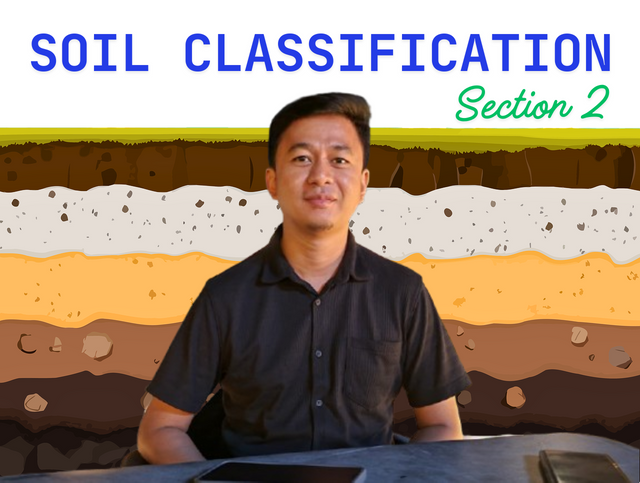
BASIC CHARACTERISTICS OF SOIL
I explained in Soil Classication Section 1 that soil is formed from the process of physical and chemical weathering of rocks. The particles that make up soil are not strongly bound to each other, hence they are relatively free to move around, hence soil is called a particulate system.
Due to this particulate system, soil deformation occurs partly due to the deformation or disintegration of individual particles and partly due to positional shifts between particles. Inter-particle sliding is the most important component because it is non-linear and a non-returning process. Soil behavior is highly non-linear and irreversible.
Note that in particulate systems, the voids or pores between particles are filled by water and air. So soil is a multi-phase material (due to the presence of solid, liquid and gas). Its behavior depends on the interaction between solid matter and water in its pores. In addition, the surface of soil particles is negatively electrically charged. The intensity of this negative charge depends on the soil mineral and can be altered by the presence of electrolytes in the pore water. In clay minerals, these electrical forces on the particle surface play a significant role in their behavior.
Soil Particle Shape, Size and Texture
The shape and size of particles and their distribution in the soil composition is called soil texture. Sand and gravel are coarse textured. On the other hand, silt and clay are fine-textured because silt and clay are formed from fine particles that are not visible to the eye. Based on its texture, soil is divided into coarse-grained soil and fine-grained soil. The boundary between coarse-grained and fine-grained soils is the visible grain, which is: about 0.06 mm.
Sandy soils whose grains measure between 0.06 mm and 2 mm are generally rounded, subrounded, angular or subangular.
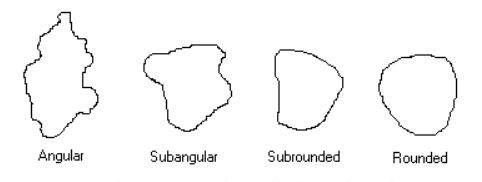
Clay particles are still generally granular, but finer than 0.02 mm, while clay particles are flat rods and less than 0.002 mm in size. This arrangement of particles can be disperse, meaning that the rods are more or less parallel, or flocculated, meaning that the rods are not parallel, but form a considerable angle with each other.
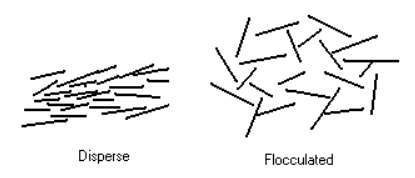
The surface of soil particles is negatively electrically charged. The intensity of this charge depends on the soil mineral and can change with the presence of electrolytes in the pore water. Whether or not the electric charge force (also called surface force) is dominant depends on the specific surface area, i.e: the surface area of a soil particle compared to the unit weight of the soil particle. This specific surface quantity is expressed in m2/g.
Coarse-grained soil has a small specific surface, so the surface force is negligible relative to its own weight. This means that the self-weight force is much more dominant than the surface drag force. Therefore, the inter-particle arrangement of coarse-grained soil is said to be a single-grain structure and is arranged like a collection of randomly packed balls. Each sand and gravel soil particle is related to other particles without bonding or said to be without cohesion. So sand and gravel are non-cohesive soils. As a result of self-weight being much more dominant than surface forces, the behavior of sand and gravel is not influenced by water, the particle distribution is the relevant parameter.
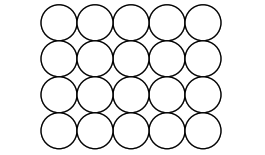
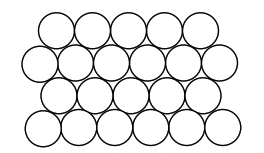
In contrast to sand, clay particles have a specific surface that is much more dominant than their relatively small gravity. The forces between particles are therefore more determined by the interaction of surface forces with the surrounding water molecules. Water molecules are bipolar molecules (positive and negative poles) and since the surface of clay particles is negatively charged, the positive poles of water molecules will be strongly bound across the clay surface and form a layer of water called absorbed water which has a different behavior from free water. The farther away from the clay surface, the bonding force of the water molecules weakens. The length of the string of water molecules determines the amount of bonding between clay particles. The bond between surfaces caused by the electrical charge of these surfaces is called cohesion. Because of this, clay soils are called cohesive soils.
Inter-Phase Relationships
Soil is a multi-phase material, consisting of soil particles and voids (pores) filled with air and/or water.
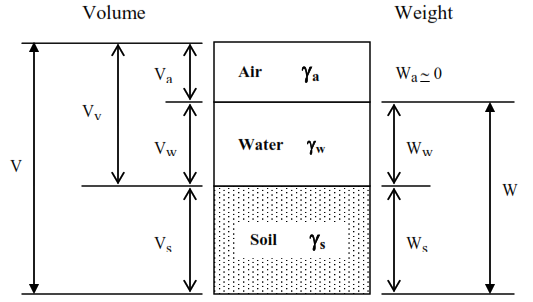
Well, in civil engineering, it is learned about the calculation of variables related to soil characteristics in order to determine the mechanical properties of the soil, engineers need to analyze this for preliminary information about soil properties that will later be used in planning building construction, especially very important for designing an appropriate foundation. I explain the variables and their definitions and calculation formulas as follows:
Porosity, n : The ratio of void volume or pore volume, Vv, to total soil volume, V. Expressed in percent (maximum 100%).
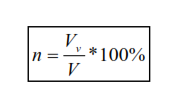
Void Ratio, e : The ratio of void volume, Vv, to soil particle volume (solid phase volume), Vs. Expressed in decimals.

Degree of Saturation, S : The ratio of water volume, Vw, to void volume, Vv. Expressed in percent (maximum 100%).
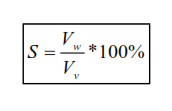
- The degree of saturation expresses the amount of water filling the soil pores, so for dry soil, S = 0%, partially saturated soil S = 0-100% and for water saturated soil S = 100%.
Water Content, ω : The ratio of the weight of water in voids, Ww, to the weight of soil particles, Ws. Expressed in percent.
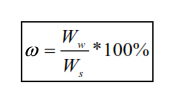
- For dry soils this moisture content is 0%. In general, soil moisture content is less than 100%. However, for organic soils and peat, the moisture content can be as high as 500% or more.
Unit Weight : is the ratio of weight to unit volume. The volume weight of water, γw, the volume weight of soil particles, γs, and the total volume weight, γ, are defined as follows:
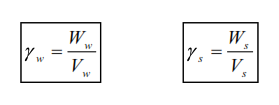

Specific Gravity : the ratio of the volume weight of soil particles to the volume weight of water. The specific gravity of sandy soils ranges from 2.60-2.70, clay soils from 2.65-2.80, and for organic soils it can be lower than 2.50.

I think that writing this basic explanation of soil from an engineering perspective is enough to enrich the readers' knowledge, because if I continue to the stage of more material, I feel that readers do not need to go into more specific parts. Maybe later I will also make a post about calculation examples to better show how it works.

#steemexclusive
@ myteacher
yes
no
Terimakasih telah berbagi postingan yang mengedukasi pada kami tentang partikel tanah, saya berharap anda dapat mencoba melamar menjadi bagian tim pengajar pada musim berikutnya sehingga dapat terus berbagi pengetahuan yang berguna bagi banyak orang.
Of course I will, it would be a big mistake not to listen to The Best Teacher's advice!
TEAM 2
Congratulations! Your post has been upvoted through @steemcurator04. Good post here should be..Thanks @fombae !